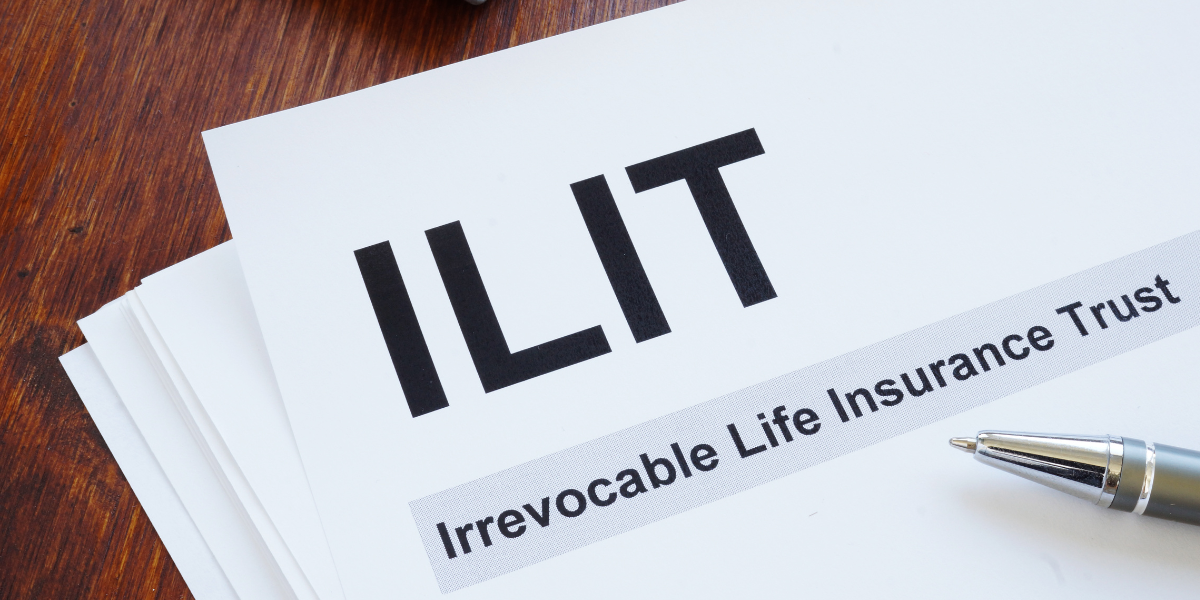
BLOG
Have You and Your Spouse Coordinated your Estate Plans?
When it comes to estate planning, married couples often assume that simply naming each other in their wills or designating each other as beneficiaries is sufficient. However, unintended consequences can result if you and your spouse fail to properly coordinate your estate plans.
Examples include conflicting provisions, unexpected tax consequences or assets passing in ways that don’t align with your shared wishes. Coordinated estate planning can help ensure that both your and your spouse’s documents and strategies work together harmoniously, protecting your legacies and the financial well-being of your loved ones.
Boost tax efficiency
One of the primary benefits of coordinating estate plans is tax efficiency. By working together, you and your spouse can take full advantage of the marital deduction and applicable gift and estate tax exemptions. This can help minimize the overall tax burden on both estates.
Coordination becomes especially important if you have a blended family, where children from previous relationships are involved, or in situations with complex assets like business interests or multiple properties. Clear and consistent planning that factors in tax consequences can help ensure that all beneficiaries are treated fairly and that your intentions are honored.
Streamline administration
Another benefit of coordinated planning is it helps streamline the administration of the estate. If one spouse becomes incapacitated or passes away, a well-integrated plan can reduce the administrative burden on the surviving spouse, avoid disputes and accelerate the transfer of assets.
Coordinating plans also allow you and your spouse to make joint decisions about health care directives, powers of attorney and guardianship of minor children, ensuring that both of your wishes are respected and consistently documented.
Follow your state’s law
Keep in mind that state law generally governs estate matters. Therefore, state law determines if your property is community property, separate property or tenancy by the entirety.
For instance, California is a community property state. That generally means that half of what you own is your spouse’s property and vice versa, though there are some exceptions.
Be proactive
Married spouses who coordinate their estate plans can avoid pitfalls and maximize the benefits of thoughtful planning. Taking these steps proactively can strengthen your and your spouse’s financial security and shared legacy. FMD can help ensure that all elements of your plans are aligned and up to date.
Why Choosing the Right Trustee Matters
It’s not uncommon for an estate plan to contain multiple trusts. They can enable you to hold assets for and transfer them to beneficiaries, avoid probate, and possibly reduce estate tax exposure. When drafting a trust, you must appoint a trustee. This can be an individual or a financial institution.
Before choosing a trustee, know that the job comes with many responsibilities — from keeping careful records and making smart investment choices to staying fair and keeping beneficiaries informed. A trustee must always put the beneficiaries’ interests first and handle everything with care, honesty and good judgment.
What are a trustee’s tasks?
Trustees have significant legal responsibilities, primarily related to administering the trust on behalf of beneficiaries according to the terms of the trust document. However, the role can require many different types of tasks. For example, even if a tax professional is engaged to prepare tax returns, the trustee is responsible for ensuring that they’re completed correctly and filed on time.
One of the more challenging trustee duties is to accurately account for investments and distributions. When funds are distributed to cover a beneficiary’s education expenses, for example, the trustee should record both the distribution and the expenses covered. Beneficiaries are allowed to request an accounting of the transactions at any time.
The trustee needs to invest assets within the trust reasonably, prudently and for the long-term sake of beneficiaries. And trustees must avoid conflicts of interest — that is, they can’t act for personal gain when managing the trust. For instance, trustees typically can’t purchase assets from the trust. The trustee probably would prefer a lower purchase price, which would run counter to the best interests of the trust’s beneficiaries.
Finally, trustees must be impartial. They may need to decide between competing interests while still acting within the terms of the trust document. An example of competing interests might be when a trust is designed to provide current income to a first beneficiary during his or her lifetime, after which the assets pass to a second beneficiary. Although the first beneficiary would probably prefer that the trust’s assets be invested in income-producing securities, the second would likely prefer growth investments.
What qualities should you look for?
Several qualities help make someone an effective trustee, including:
A solid understanding of tax and trust law,
Investment management experience,
Bookkeeping skills,
Integrity and honesty, and
The ability to work with all beneficiaries objectively and impartially.
And because some trusts continue for generations, trustees may need to be available for an extended period. For this reason, many people name a financial institution or professional advisor, rather than a friend or family member, as trustee.
Consider all your options
Naming a trustee is an important decision, as this person or institution will be responsible for carrying out the terms outlined in the trust documents. FMD can help you weigh the options available to you.
Members of the “Sandwich Generation” Face Unique Estate Planning Circumstances
Members of the sandwich generation — those who find themselves simultaneously caring for aging parents while supporting their own children — face unique financial and emotional pressures. One critical yet often overlooked task amid this juggling act is estate planning.
How can you best handle your parents’ financial affairs in the later stages of life? Consider incorporating their needs into your estate plan while tweaking, when necessary, the arrangements they’ve already made. Let’s take a closer look at four critical steps.
1. Make cash gifts to your parents and pay their medical expenses
One of the simplest ways to help your parents is to make cash gifts to them. If gift and estate taxes are a concern, you can take advantage of the annual gift tax exclusion. For 2025, you can give each parent up to $19,000 without triggering gift taxes or using your lifetime gift and estate tax exemption. The exemption amount for 2025 is $13.99 million.
Plus, payments to medical providers aren’t considered gifts, so you can make such payments on your parents’ behalf without using any of your annual exclusion or lifetime exemption amounts.
2. Set up trusts
There are many trust-based strategies you can use to assist your parents. For example, if you predecease your parents, your estate plan might establish a trust for their benefit, with any remaining assets passing to your children when your parents die.
Another option is to set up trusts during your lifetime that leverage your $13.99 million gift and estate tax exemption. Properly designed, these trusts can remove assets — together with all future appreciation in their value — from your taxable estate. They can provide income to your parents during their lives, eventually passing to your children free of gift and estate taxes.
3. Buy your parents’ home
If your parents have built up significant equity in their home, consider buying it and leasing it back to them. This arrangement allows your parents to tap their home’s equity without moving out while providing you with valuable tax deductions for mortgage interest, depreciation, maintenance and other expenses.
To avoid negative tax consequences, pay a fair price for the home (supported by a qualified appraisal) and charge your parents fair-market rent.
4. Plan for long-term care expenses
The annual cost of long-term care (LTC) can easily reach six figures. Expenses can include assisted living facilities, nursing homes and home health care.
These expenses aren’t covered by traditional health insurance policies or Social Security, and Medicare provides little, if any, assistance. To prevent LTC expenses from devouring your parents’ resources, work with them to develop a plan for funding their health care needs through LTC insurance or other investments.
Don’t forget about your needs
As part of the sandwich generation, it’s easy to lose sight of yourself. After addressing your parents’ needs, focus on your own. Are you saving enough for your children’s college education and your own retirement? Do you have a will and power of attorney in place for you and your spouse?
With proper planning, you’ll make things less complex for your children so they might avoid some of the turmoil that you could be going through. Contact FMD for additional planning techniques if you’re a member of the sandwich generation.
Factor in GST Tax when Transferring Assets to your Grandchildren
If you’re considering making asset transfers to your grandchildren or great grandchildren, be sure your estate plan addresses the federal generation-skipping transfer (GST) tax. This tax ensures that large estates can’t bypass a round of taxation that would normally apply if assets were transferred from parent to child, and then from child to grandchild.
Because of the complexity and potential tax liability, careful estate planning is essential when considering generation-skipping transfers. Trusts are often used as a strategic vehicle to allocate the GST tax exemption amount effectively and ensure that assets pass tax-efficiently to younger generations.
ABCs of the GST tax
The GST tax applies at a flat 40% rate — in addition to otherwise applicable gift and estate taxes — to transfers that skip a generation. “Skip persons” include your grandchildren, other relatives who are more than one generation below you and unrelated people who are more than 37½ years younger than you. There’s an exception, however, for a grandchild whose parent (your child) predeceases you. In that case, the grandchild moves up a generation and is no longer considered a skip person.
Even though the GST tax enjoys an annual inflation-adjusted lifetime exemption in the same amount as the lifetime gift and estate tax exemption (currently, $13.99 million), it works a bit differently. For example, while the gift and estate tax exemption automatically protects eligible transfers of wealth, the GST tax exemption must be allocated to a transfer to shelter it from tax.
3 transfer types trigger GST tax
There are three types of transfers that may trigger the GST tax:
A direct skip — a transfer directly to a skip person that is subject to federal gift and estate tax,
A taxable distribution — a distribution from a trust to a skip person, or
A taxable termination — such as when you establish a trust for your children, the last child beneficiary dies and the trust assets pass to your grandchildren.
The GST tax doesn’t apply to transfers to which you allocate your GST tax exemption. In addition, the GST tax annual exclusion — which is similar to the gift tax annual exclusion — allows you to transfer up to $19,000 per year (for 2025) to any number of skip persons without triggering GST tax or using up any of your GST tax exemption.
Transfers to a trust qualify for the annual GST tax exclusion only if the trust 1) is established for a single beneficiary who’s a grandchild or other skip person, and 2) provides that no portion of its income or principal may be distributed to (or for the benefit of) anyone other than that beneficiary. Additionally, if the trust doesn’t terminate before the beneficiary dies, any remaining assets will be included in the beneficiary’s gross estate.
If you wish to make substantial gifts, either outright or in trust, to your grandchildren or other skip persons, allocate your GST tax exemption carefully. Turn to FMD for answers regarding the GST tax.
Undoing an Irrevocable Life Insurance Trust is Possible
Life insurance can be a powerful estate planning tool. Indeed, it creates an instant source of wealth and liquidity to meet your family’s financial needs after you’re gone. And to shield the proceeds from potential estate taxes, thus ensuring more money for your loved ones, many people transfer their policies to irrevocable life insurance trusts (ILITs).
But what if you have an ILIT that you no longer need? Does its irrevocable nature mean you’re stuck with it forever? Not necessarily. You may have options for pulling a life insurance policy out of an ILIT or even unwinding the ILIT entirely.
Benefits of an ILIT
An ILIT shields life insurance proceeds from estate tax because the trust, rather than the insured, owns the policy. Note, however, that under the “three-year rule,” if you transfer an existing policy to an ILIT and then die within three years, the proceeds remain taxable. That’s why it’s preferable to have the ILIT purchase a new policy, if possible, rather than transfer an existing policy to the trust.
The key to removing the policy from your taxable estate is to relinquish all “incidents of ownership.” That means, for example, you can’t retain the power to change beneficiaries; assign, surrender or cancel the policy; borrow against the policy’s cash value; or pledge the policy as security for a loan (although the trustee may have the power to do these things).
Reasons to undo an ILIT
Generally, there are two reasons you might want to undo an ILIT: 1) you no longer need life insurance, or 2) you still need life insurance but your estate isn’t large enough to trigger estate tax, and you’d like to eliminate the restrictions and expense associated with the ILIT. Although your ability to undo an ILIT depends on the circumstances, potential options include:
Allowing the insurance to lapse. This may be a viable option if the ILIT only holds a term life insurance policy that you no longer need. You simply stop making contributions to the trust to cover premium payments. Technically, the ILIT continues to exist, but once the policy lapses it owns no assets. It’s possible to allow a permanent life insurance policy to lapse, but other options may be preferable, especially if the policy has a significant cash value.
Swapping the policy for cash or other assets. Many ILITs permit the grantor to retrieve a policy from the ILIT by substituting cash or other assets of equivalent value. If allowed, you may be able to gain access to a policy’s cash value by swapping it for illiquid assets of equivalent value.
Surrendering or selling the policy. If your ILIT holds a permanent insurance policy, the trust might surrender it, which will preserve its cash value but avoid the need to continue paying premiums. Alternatively, if you’re eligible, the trust could sell the policy in a life settlement transaction.
Distributing the trust assets. Some ILITs give the trustee the discretion to distribute trust funds (including the policy’s cash value, other trust assets or possibly the policy itself) to your beneficiaries, such as your spouse or children. Typically, these distributions are limited to funds needed for “health, education, maintenance and support.”
These are some, but by no means all, of the strategies that may be available to unwind an ILIT. Contact FMD for additional details.
Need to Modify an Existing Irrevocable Trust? Decant It
“Decanting” an irrevocable trust allows a trustee to use his or her distribution powers to transfer assets from one trust into another with different — often more favorable — terms. Much like decanting wine to separate it from sediment, trust decanting “pours” assets into a new vessel, potentially improving clarity and control.
While the original trust must be irrevocable, meaning its terms typically can’t be changed by the grantor, decanting offers a lawful method for trustees to update or adjust those terms under certain conditions.
Decanting Q&As
There are several reasons a trustee might consider decanting. For example, the original trust may lack flexibility to deal with changing tax laws, family circumstances or beneficiary needs. Decanting can allow for the removal of outdated provisions, the addition of modern administrative powers or even a change in the trust’s governing law to a more favorable jurisdiction. It may also provide a way to correct drafting errors, protect assets from creditors or introduce special needs provisions for a beneficiary who becomes disabled.
However, decanting laws vary dramatically from state to state, so it’s important to familiarize yourself with your state’s rules and evaluate their effect on your estate planning goals. Here are several common questions and answers regarding decanting a trust:
Q: If your trust is in a state without a decanting law, can you benefit from another state’s law?
A: Generally yes, but to avoid any potential complaints by beneficiaries it’s a good idea to move the trust to a state whose law specifically addresses this issue. In some cases, it’s simply a matter of transferring the existing trust’s governing jurisdiction to the new state or arranging for it to be administered in that state.
Q: Does the trustee need to notify beneficiaries or obtain their consent?
A: Decanting laws generally don’t require beneficiaries to consent to a trust decanting and several states don’t even require that beneficiaries be notified. Where notice is required, the specific requirements are all over the map: Some states require notice to current beneficiaries while others also include contingent or remainder beneficiaries. Even if notice isn’t required, notifying beneficiaries may help stave off potential disputes in the future.
Q: What is the trustee’s authority?
A: When exploring decanting options, trustees should consider which states offer them the greatest flexibility to achieve their goals. In general, decanting authority is derived from a trustee’s power to make discretionary distributions. In other words, if the trustee is empowered to distribute the trust’s funds among the beneficiaries, he or she should also have the power to distribute them to another trust. But state decanting laws may restrict this power.
Decanting can be complicated
Because of its complexity, decanting an irrevocable trust should be approached with careful legal and tax guidance. When used appropriately, it can be a strategic way to modernize an inflexible trust and better serve your long-term goals as well as your beneficiaries. Consult FMD before taking action.
There’s No Time like the Present to have Your Will Drafted
When a person considers an “estate plan,” he or she typically thinks of a will. And there’s a good reason: A well-crafted, up-to-date will is the cornerstone of an estate plan. Importantly, a will can help ease the burdens on your family during a difficult time. Let’s take a closer look at what to include in a will.
Start with the basics
Typically, a will begins with an introductory clause identifying yourself and where you reside (city, state, county, etc.). It should also state that this is your official will and replaces any previous wills.
After the introductory clause, a will generally explains how your debts are to be paid. The provisions for repaying debt typically reflect applicable state laws.
You may also use a will to name a guardian for minor children. To be on the safe side, name a backup in case your initial choice is unable or unwilling to serve as guardian or predeceases you.
Make bequests
One of the major sections of your will — and the one that usually requires the most introspection — divides up your remaining assets. Outside your residuary estate, you’ll likely want to make specific bequests of tangible personal property to designated beneficiaries. For example, you might leave a family heirloom to a favorite niece or nephew.
When making bequests, be as specific as possible. Don’t simply refer to jewelry or other items without describing them in detail. This can avoid potential conflicts after your death.
If you’re using a trust to transfer property, identify the property that remains outside the trust, such as furniture and electronic devices. Typically, these items won’t be suitable for inclusion in a trust.
Appoint an executor
Name your executor — usually a relative or professional — who’s responsible for administering your will. Of course, this should be a reputable person whom you trust.
Also, include a successor executor if the first choice can’t perform these duties. If you’re inclined, you may use a professional as the primary executor or as a backup.
Follow federal and state laws
Be sure to meet all the legal obligations for a valid will in the applicable state and keep it current. Sign the will, putting your initials on each page, with your signature attested to by witnesses. Include the addresses of the witnesses in case they ever need to be located. Don’t use beneficiaries as witnesses. This could lead to potential conflicts of interest.
Keep in mind that a valid will in one state is valid in others. So if you move, you won’t necessarily need a new will. However, there may be other reasons to update it at that time. Contact FMD with any questions regarding your will.







